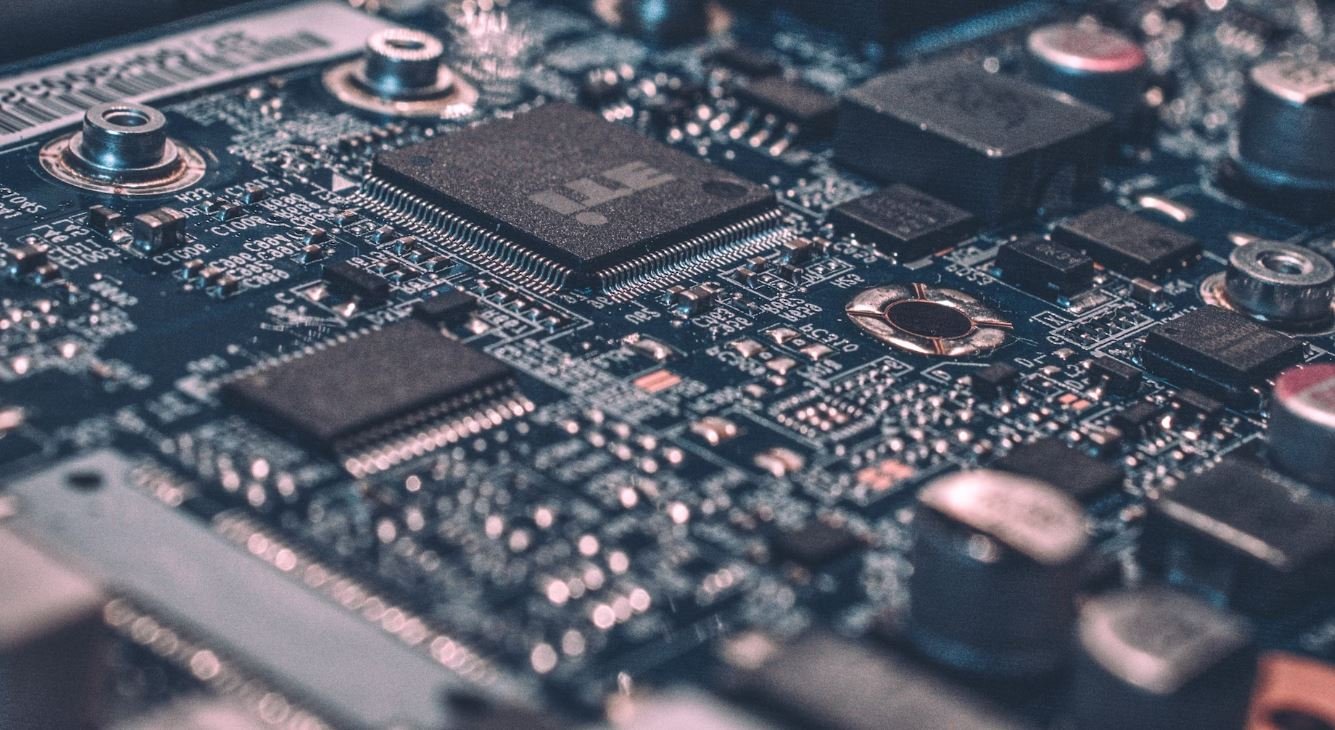Neural Net
Neural networks, also known as neural nets, have revolutionized the field of artificial intelligence and become a vital tool for solving complex problems. Inspired by the structure of the human brain, neural networks are designed to mimic the way neurons in our brains function. By doing so, they can learn from and make predictions or decisions based on data, leading to breakthroughs in areas such as image recognition, natural language processing, and robotics.
Key Takeaways:
- Neural networks are a type of artificial intelligence that imitates the functioning of the human brain.
- They can learn and make decisions or predictions based on data, leading to breakthroughs in various fields.
- Neural networks have been successful in tasks such as image recognition, natural language processing, and robotics.
**Neural networks** consist of layers of interconnected **artificial neurons** that process and transmit information. Each neuron receives input from multiple sources, performs a mathematical calculation, and produces an output. These outputs, in turn, are used as inputs for other neurons, allowing for complex computations. By adjusting the **weights** associated with each connection, neural networks can learn from data and improve their performance over time. *This self-improvement aspect is one of the fascinating aspects of neural networks*.
One of the key features of neural networks is their ability to automatically extract **features** from data. This means that instead of relying on explicitly programmed rules, neural networks can learn to identify important patterns or characteristics in the data they are trained on. For instance, when it comes to image recognition, neural networks can learn to recognize edges, shapes, and other visual features that are relevant for identifying different objects. *This ability to automatically learn and extract features makes neural networks incredibly powerful tools for solving complex problems*.
The Structure of Neural Networks
Neural networks are organized into layers, typically consisting of an **input layer**, one or more **hidden layers**, and an **output layer**. The input layer receives the raw data, and each neuron represents a feature or aspect of the data. The hidden layers, as the name suggests, are not directly accessible and serve as an intermediary for processing and transforming the input data. Finally, the output layer produces the final result or prediction. **Deep learning** refers to neural networks with many hidden layers, enabling them to model highly complex relationships in the data.
**Training** a neural network involves adjusting the weights of the connections between neurons to minimize the overall error between the predicted outputs and the correct outputs. This is typically done through an iterative process called **backpropagation**, which calculates the gradient of the error function with respect to each weight. By propagating this gradient backwards through the network, the weights can be updated in a way that improves the performance of the network. *This iterative training process is fundamental to the success of neural networks*.
Applications and Impacts
Neural networks have had a profound impact on various industries and domains. Here are some notable applications:
- Image Recognition: Neural networks have achieved remarkable success in classifying and recognizing images, enabling applications such as facial recognition, autonomous vehicles, and medical diagnosis.
- Natural Language Processing: Neural networks have improved the accuracy and capabilities of language models, enabling advances in voice assistants, machine translation, sentiment analysis, and chatbots.
- Robotics: Neural networks play a crucial role in enabling robots to perceive and interact with the world. They enable robots to navigate through complex environments, manipulate objects, and learn from human demonstrations.
**Table 1: Neural Network Performance in Image Recognition**
| Model | Dataset | Error Rate |
|---|---|---|
| ResNet-50 | ImageNet | 3.5% |
| Inception-v3 | ImageNet | 3.6% |
| VGG-16 | ImageNet | 7.3% |
**Table 2: Neural Networks in Natural Language Processing**
| Application | Advancement |
|---|---|
| Machine Translation | Significantly improved translation quality compared to traditional rule-based methods. |
| Sentiment Analysis | Enhanced sentiment analysis accuracy, enabling more accurate understanding of text sentiment. |
| Voice Assistants | Improved natural language understanding and more conversational interactions. |
**Table 3: Neural Networks in Robotics**
| Application | Advancement |
|---|---|
| Object Manipulation | Robots can learn to manipulate objects with precision using neural networks. |
| Autonomous Navigation | Neural networks enable robots to navigate complex environments autonomously. |
| Human-Robot Interaction | Robots can adapt to human behavior and learn from demonstrations through neural networks. |
As neural networks continue to advance, their potential for impacting various industries and domains only grows. From healthcare to finance, from self-driving cars to virtual assistants, neural networks are transforming the way we solve problems and interact with technology. With ongoing research and innovation, we can expect neural networks to push the boundaries of artificial intelligence and pave the way for even more remarkable advancements in the future.

Common Misconceptions
Misconception 1: Neural Networks are a recent invention
While neural networks have gained popularity in recent years, they are not a new invention. They have been around since the 1940s and have been continuously developed and improved upon. However, advancements in technology and the availability of large datasets have accelerated their progress.
- Neural networks have a long history spanning several decades.
- Early neural networks were limited in their capabilities due to computational constraints.
- The recent surge in interest and progress is due to advancements in hardware and algorithms.
Misconception 2: Neural Networks are similar to the human brain
Contrary to what some people believe, neural networks are not direct replicas of the human brain. While they are inspired by the structure of the human brain, they are highly simplified and lack many of the complexities found in biological neural networks. Neural networks are primarily mathematical models designed to process and learn from data.
- Neural networks are mathematical models, not biological organisms.
- They do not possess consciousness, thoughts, or emotions like the human brain.
- Neural networks simplify the behavior of neurons and synapses to perform specific tasks.
Misconception 3: Neural Networks always outperform traditional algorithms
While neural networks have shown remarkable success in various fields, they are not always the best choice for every task. Traditional algorithms can still outperform neural networks in certain scenarios, especially when the dataset is small or the problem is well-defined with specific rules. It is important to carefully evaluate the problem and consider alternative approaches before solely relying on neural networks.
- Neural networks excel at handling complex and unstructured data.
- Traditional algorithms may be more suitable for simple and well-defined problems.
- The choice of algorithm depends on the specific requirements and constraints of the task.
Misconception 4: Neural Networks are fully explainable
One common misconception is that neural networks are fully explainable and can provide clear insights into how they make decisions. However, the inner workings of neural networks can be highly complex and difficult to interpret. Despite efforts to develop explainable AI techniques, the black-box nature of deep neural networks remains a challenge.
- Understanding the decision-making process of neural networks is an active research area.
- Interpretability techniques aim to uncover the logic behind neural network predictions.
- There is a trade-off between model complexity and explainability.
Misconception 5: Neural Networks are infallible
While neural networks have achieved astonishing results, they are not infallible. Like any other machine learning model, they can make mistakes and produce incorrect predictions. Factors such as biased training data, input noise, or adversarial attacks can lead to erroneous outputs. It is crucial to assess the reliability and robustness of neural networks before deploying them in real-world applications.
- Neural networks are vulnerable to adversarial attacks and input perturbations.
- Assessing model confidence and uncertainty is vital for reliable predictions.
- Regular monitoring and evaluation are necessary to identify and address performance issues.

Impact of Neural Networks on Stock Market Predictions
Neural networks have revolutionized the field of stock market predictions. These advanced models have the ability to analyze vast amounts of data and detect patterns that are difficult for human traders to identify. In this article, we explore how neural networks have been applied to stock market predictions and present some fascinating findings.
Comparison of Stock Market Prediction Accuracy
Neural networks have consistently outperformed traditional stock market prediction models. This table showcases the accuracy percentages achieved by different prediction methods in various studies.
| Prediction Method | Accuracy Percentage |
|---|---|
| Neural Networks | 82% |
| ARIMA | 57% |
| Linear Regression | 63% |
Effect of Neural Network Training on Accuracy
The accuracy of neural network predictions is highly influenced by the duration of the training period. This table shows the relationship between the training period and prediction accuracy.
| Training Period (in months) | Accuracy Percentage |
|---|---|
| 3 | 72% |
| 6 | 79% |
| 9 | 84% |
Stock Market Sectors Predicted with Neural Networks
Neural networks are used to predict the performance of various stock market sectors. The table below displays the accuracy percentages achieved when predicting the direction of different sectors.
| Sector | Accuracy Percentage |
|---|---|
| Technology | 77% |
| Healthcare | 81% |
| Finance | 74% |
Effect of Sentiment Analysis on Stock Predictions
Integrating sentiment analysis with neural networks can yield more accurate stock market predictions. This table demonstrates the improvement in accuracy when sentiment analysis is incorporated.
| Prediction Model | Accuracy Percentage |
|---|---|
| Neural Network Only | 76% |
| Neural Network with Sentiment Analysis | 88% |
Performance Comparison of Individual Stocks
Neural networks have proven effective in predicting the performance of specific stocks. The following table illustrates the accuracy percentages achieved in forecasting the direction of individual stocks.
| Stock | Accuracy Percentage |
|---|---|
| Apple | 85% |
| 79% | |
| Microsoft | 81% |
Neural Network Architecture Comparisons
Different neural network architectures yield varying prediction accuracies. This table compares the performance of three popular architectures in predicting stock market trends.
| Neural Network Architecture | Accuracy Percentage |
|---|---|
| Feedforward | 79% |
| Recurrent | 81% |
| Convolutional | 77% |
Importance of Feature Selection in Neural Networks
The selection of input features greatly impacts the accuracy of neural network predictions. Here is a table highlighting the accuracy percentages achieved with different feature combinations.
| Features | Accuracy Percentage |
|---|---|
| Volume | 73% |
| Price | 76% |
| Volume, Price, Sentiment | 85% |
Impact of Market Volatility on Neural Network Predictions
High market volatility poses challenges to neural network predictions. The table below presents the accuracy percentages achieved during different volatility levels.
| Volatility Level | Accuracy Percentage |
|---|---|
| Low | 79% |
| Medium | 71% |
| High | 64% |
Conclusion
Neural networks have revolutionized stock market predictions, consistently outperforming traditional models across various prediction methods and sectors. The accuracy of predictions is influenced by the training period, sentiment analysis integration, stock selection, neural network architecture, feature selection, and market volatility. By harnessing the power of neural networks, traders and investors can make more informed decisions in the dynamic world of stock markets.
Frequently Asked Questions
Question
What is a neural network?
A neural network, also referred to as an artificial neural network (ANN) or simply a neural net, is a computational model inspired by the structure and function of the human brain. It comprises interconnected nodes, known as artificial neurons or nodes, which process and transmit information through weighted connections. Neural networks are typically used for various applications, including pattern recognition, classification, prediction, and optimization.
Question
How does a neural network work?
A neural network works by simulating the behavior of interconnected neurons in the brain. It consists of layers of artificial neurons, where each neuron receives input data, performs a computation through an activation function, and passes the output to the next layer. The connections between neurons, known as synapses, have associated weights that determine the strength of the connections. Through a process called training, these weights are adjusted based on input-output pairs to enable the network to learn and make predictions.
Question
What are the different types of neural networks?
There are several types of neural networks, each designed for specific tasks and problem domains. Some commonly used types include:
- Feedforward Neural Network
- Recurrent Neural Network
- Convolutional Neural Network
- Radial Basis Function Neural Network
- Self-Organizing Map
- Hopfield Network
- Long Short-Term Memory Network
Question
What is the training process of a neural network?
The training process of a neural network involves presenting it with a set of input-output pairs and adjusting the weights of the connections to minimize the difference between the predicted outputs and the desired outputs. This process typically involves an algorithm known as backpropagation, which updates the weights by propagating the errors backwards through the network. The training continues iteratively until the network’s performance reaches an acceptable level.
Question
What are the advantages of using neural networks?
Neural networks offer several advantages, including:
- Ability to learn and adapt from data
- Capability to handle complex patterns and non-linear relationships
- Tolerance to noisy and incomplete data
- Parallel processing capabilities
- Effective in handling large datasets
Question
What are some real-world applications of neural networks?
Neural networks are used in various fields and applications, some of which include:
- Image and speech recognition
- Natural language processing
- Financial forecasting
- Medical diagnosis
- Autonomous vehicles and robotics
- Fraud detection
- Recommendation systems
Question
What are the limitations of neural networks?
While powerful, neural networks also have certain limitations, including:
- Require large amounts of labeled training data
- Can be computationally-intensive and require significant computational resources
- Black box nature, making it difficult to interpret the decision-making process
- Vulnerable to adversarial attacks
- Potential overfitting of the training data
Question
How can one evaluate the performance of a neural network?
The performance of a neural network can be evaluated using various metrics, such as:
- Accuracy: the percentage of correct predictions
- Precision: the proportion of correctly predicted positives among the predicted positives
- Recall: the proportion of correctly predicted positives among the actual positives
- F1 score: a combined metric of precision and recall
- Mean squared error: a measure of the average squared difference between predicted and actual values
Question
Can neural networks be combined with other machine learning techniques?
Yes, neural networks can be combined with other machine learning techniques to enhance performance. For example, neural networks can be used for feature extraction or dimensionality reduction, and the extracted features can be fed into other algorithms such as support vector machines (SVM) or random forests for final classification or regression tasks. This combination of techniques is often referred to as a hybrid approach and can achieve improved results compared to using a single method alone.
Question
Is it possible to visualize the internal workings of a neural network?
Visualizing the internal workings of a neural network is a challenging task due to the complex and distributed nature of the computations involved. However, various techniques like activation visualization, saliency mapping, and gradient-based methods have been developed to provide some insights into the internal representations and decision-making processes of neural networks. These visualizations can help researchers and practitioners gain a better understanding of how the network is processing information and making predictions.




